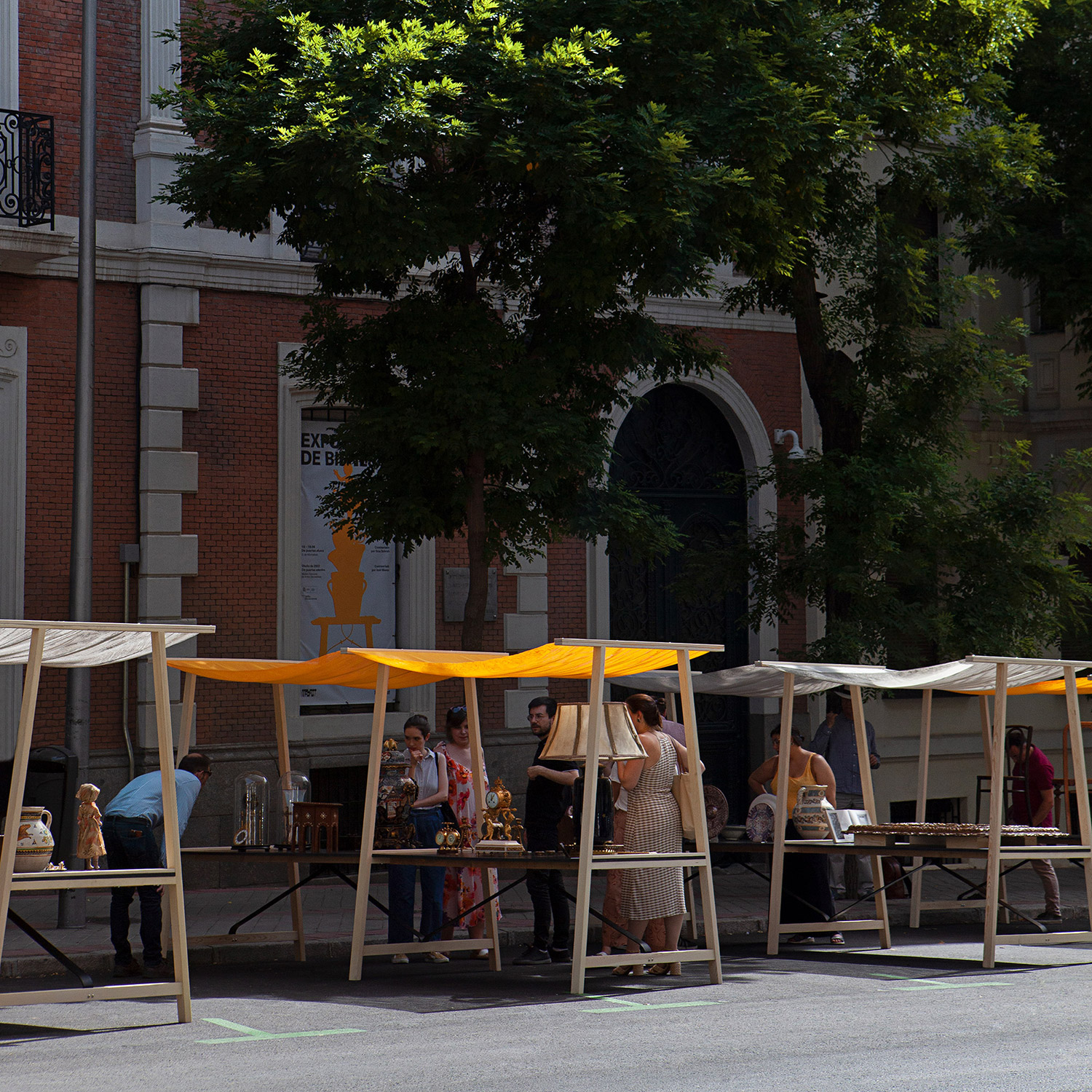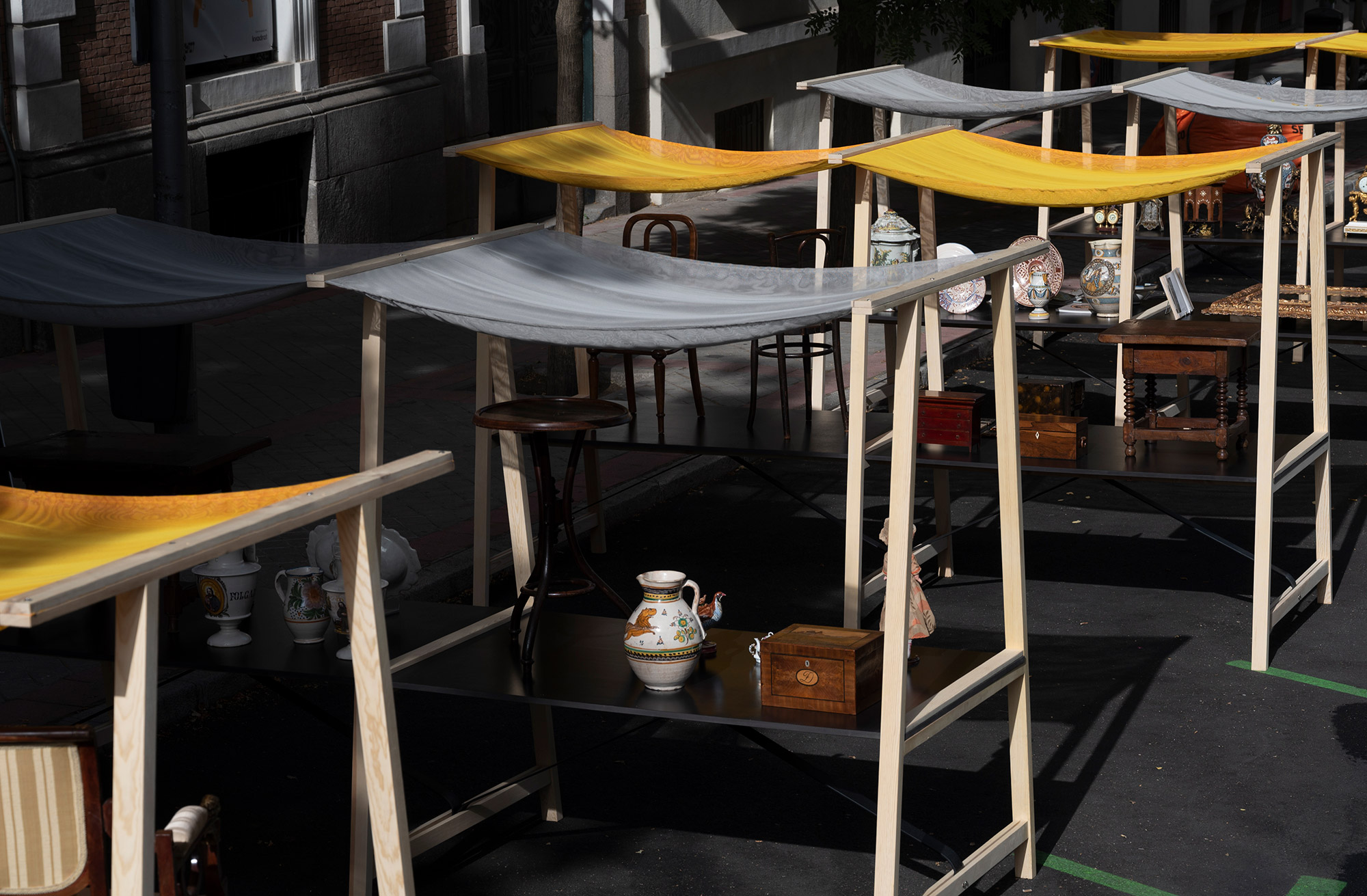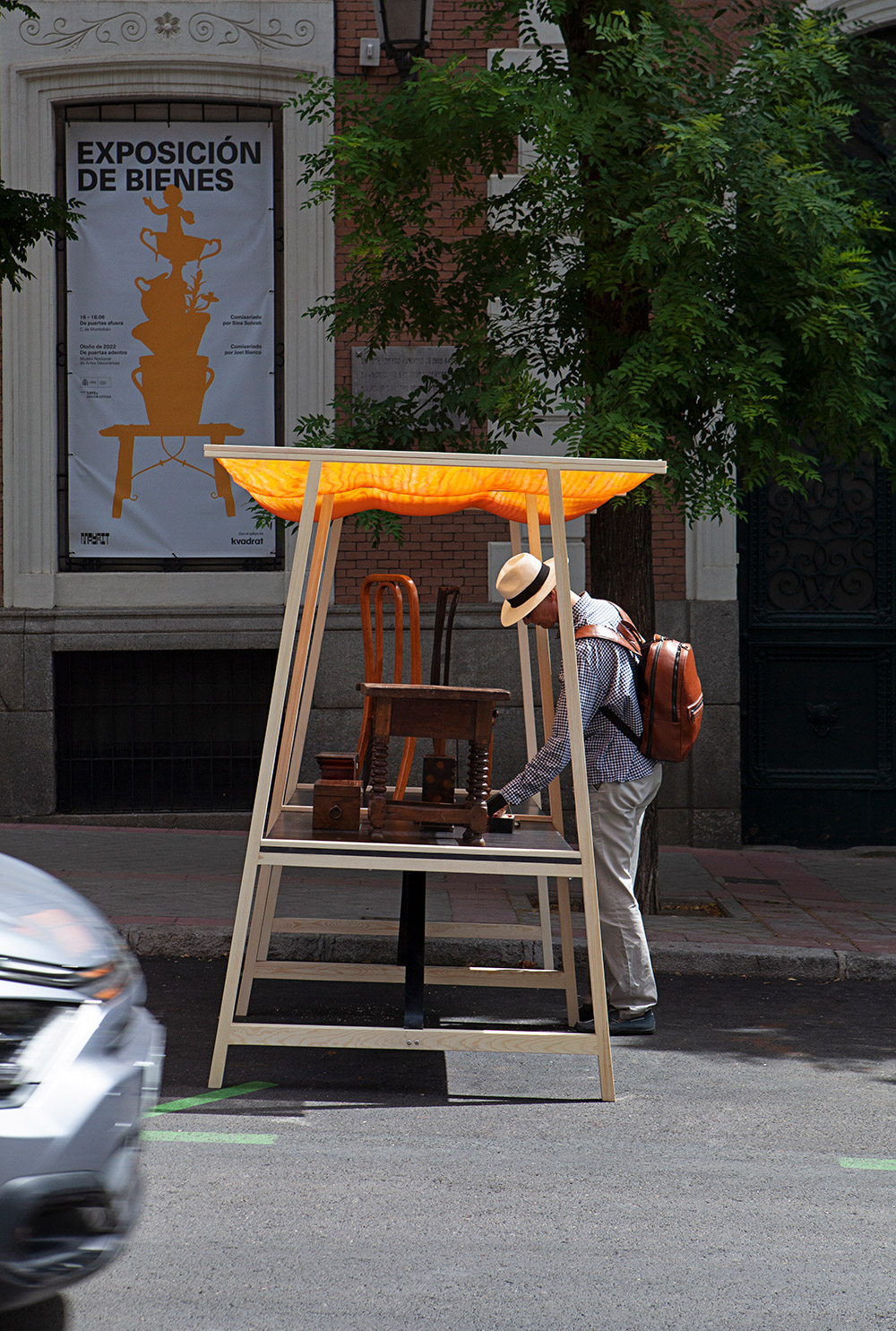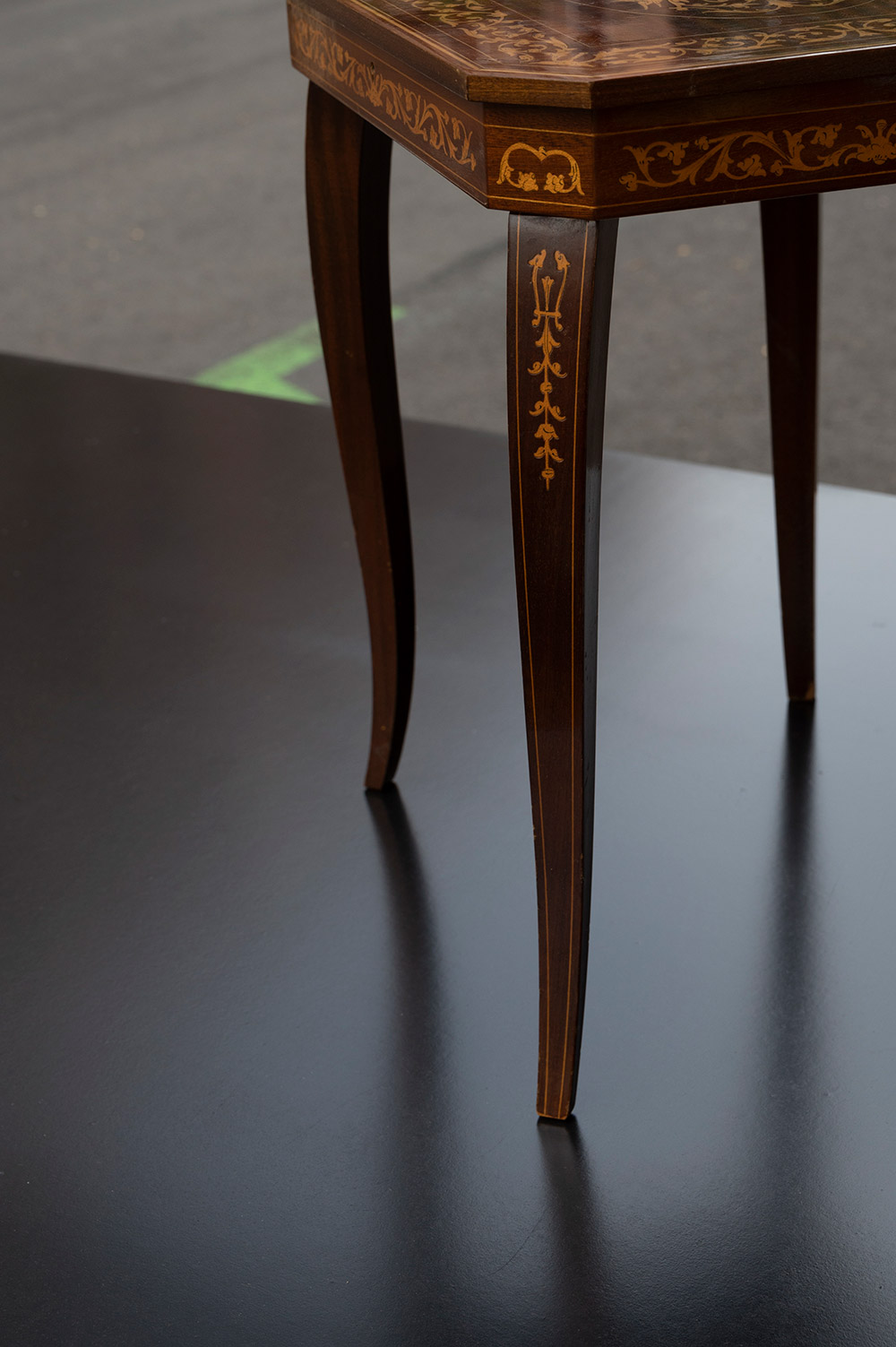The Museo Nacional de Artes Decorativas in Madrid houses a collection of some 80,000 pieces, artifacts of diverse origins and a wide breadth of decorative styles from the lives of people from the 14th century onward. Visiting the museum we see jugs that were once used to bathe, chairs which lived whole lifetimes in the corners of people's bedrooms, and rugs that hosted both dancing feet and spilt wine. These were real people's things, marked by conflict and intimacy, now preserved inside glass vitrines and time-gapped vignettes.
Consequently, viewing them in this guarded state leaves one grasping for a context that has been erased in favor of an analytical display. Given the functional and commercial natures behind the items, a decorative arts museum's collection cannot be fully understood without interaction and people. The objects lose purpose when they cannot be lived with. When we put them behind glass, we risk losing everything that makes them relatable.
Exposición de Bienes is a response to this disparity. A commercial foil to the existing infrastructure of the museum, the exhibition consists of a functioning open-air antiques market which has been curated to correspond to the museum’s collection. The goods available cover a wide range; from 16th century ceramics to early 20th century furniture. Visitors are encouraged to visit the museum and the market in any order they wish, and to take something home. By juxtaposing these infrastructures, the exhibition gives prominence to the fundamental nature of the objects in the museum's collection: that they were made to be used.
The exhibition design was largely based on trying to find a middle ground between the frenzy of a market and the stillness of a museum. The displays borrow heavily from the 17th century Castilian tables that fill the museum, imitating their iron under-structures in bent 6mm steel. The incorporated shading canopies, made from Kvadrat textiles, reference the market stalls typically found in El Rastro, the antiques district of Madrid where our vendors were also sourced.
Objects were laid out with the sparseness of a museum exhibition in mind, but without the usual plaques and labels. Instead, we asked the vendors to be present for the duration, in an attempt to have visitors engage with them to learn about the oral histories behind the objects and (hopefully) haggle a good price. The results were interesting; the wandering vendors began to resemble docents and, in a curious turn of events, could sometimes be found discussing the objects with the actual museum docents who would walk through on their breaks.
The nature of the curation process was fluid, given that the selection of objects changed as the vendors brought in new wares and sold others through the weeks leading up to the exhibition. So, instead of a traditional catalog, we printed a short essay which expands on the theme with research into the history of the decorative arts and marketplaces. A retroactive catalog is in the works with a full accounting of the objects, which was completed during the opening days.
Consequently, viewing them in this guarded state leaves one grasping for a context that has been erased in favor of an analytical display. Given the functional and commercial natures behind the items, a decorative arts museum's collection cannot be fully understood without interaction and people. The objects lose purpose when they cannot be lived with. When we put them behind glass, we risk losing everything that makes them relatable.
Exposición de Bienes is a response to this disparity. A commercial foil to the existing infrastructure of the museum, the exhibition consists of a functioning open-air antiques market which has been curated to correspond to the museum’s collection. The goods available cover a wide range; from 16th century ceramics to early 20th century furniture. Visitors are encouraged to visit the museum and the market in any order they wish, and to take something home. By juxtaposing these infrastructures, the exhibition gives prominence to the fundamental nature of the objects in the museum's collection: that they were made to be used.
The exhibition design was largely based on trying to find a middle ground between the frenzy of a market and the stillness of a museum. The displays borrow heavily from the 17th century Castilian tables that fill the museum, imitating their iron under-structures in bent 6mm steel. The incorporated shading canopies, made from Kvadrat textiles, reference the market stalls typically found in El Rastro, the antiques district of Madrid where our vendors were also sourced.
Objects were laid out with the sparseness of a museum exhibition in mind, but without the usual plaques and labels. Instead, we asked the vendors to be present for the duration, in an attempt to have visitors engage with them to learn about the oral histories behind the objects and (hopefully) haggle a good price. The results were interesting; the wandering vendors began to resemble docents and, in a curious turn of events, could sometimes be found discussing the objects with the actual museum docents who would walk through on their breaks.
The nature of the curation process was fluid, given that the selection of objects changed as the vendors brought in new wares and sold others through the weeks leading up to the exhibition. So, instead of a traditional catalog, we printed a short essay which expands on the theme with research into the history of the decorative arts and marketplaces. A retroactive catalog is in the works with a full accounting of the objects, which was completed during the opening days.
Produced for the 2022 Mayrit Bienal, Exposición de Bienes is split into two acts: the first, by Sina Sohrab, was presented in front of the Museo Nacional de Artes Decorativas from June 16-18. The second, by curator Joel Blanco, will consist of interventions within the museum in the Fall of 2022.
Organization:
Office of Design
Mayrit Bienal
Cultural Management:
Yetta Aguado
Lorena Pardo
Raquel Molina Carazo
Organization:
Office of Design
Mayrit Bienal
Cultural Management:
Yetta Aguado
Lorena Pardo
Raquel Molina Carazo
Production:
María Ona
Graphic Design:
Victor Clemente
Andrea Lopez
Participants:
Antigüedades Benito Torrijos
Eliche Arte y Antigüedades
Francisco Montesinos
Mercedes Cabeza de Vaca
Pinto y Alvarado
Supported by:
Kvadrat
Images:
Asier Rua
Blanca Guerrero
María Ona
Graphic Design:
Victor Clemente
Andrea Lopez
Participants:
Antigüedades Benito Torrijos
Eliche Arte y Antigüedades
Francisco Montesinos
Mercedes Cabeza de Vaca
Pinto y Alvarado
Supported by:
Kvadrat
Images:
Asier Rua
Blanca Guerrero
















